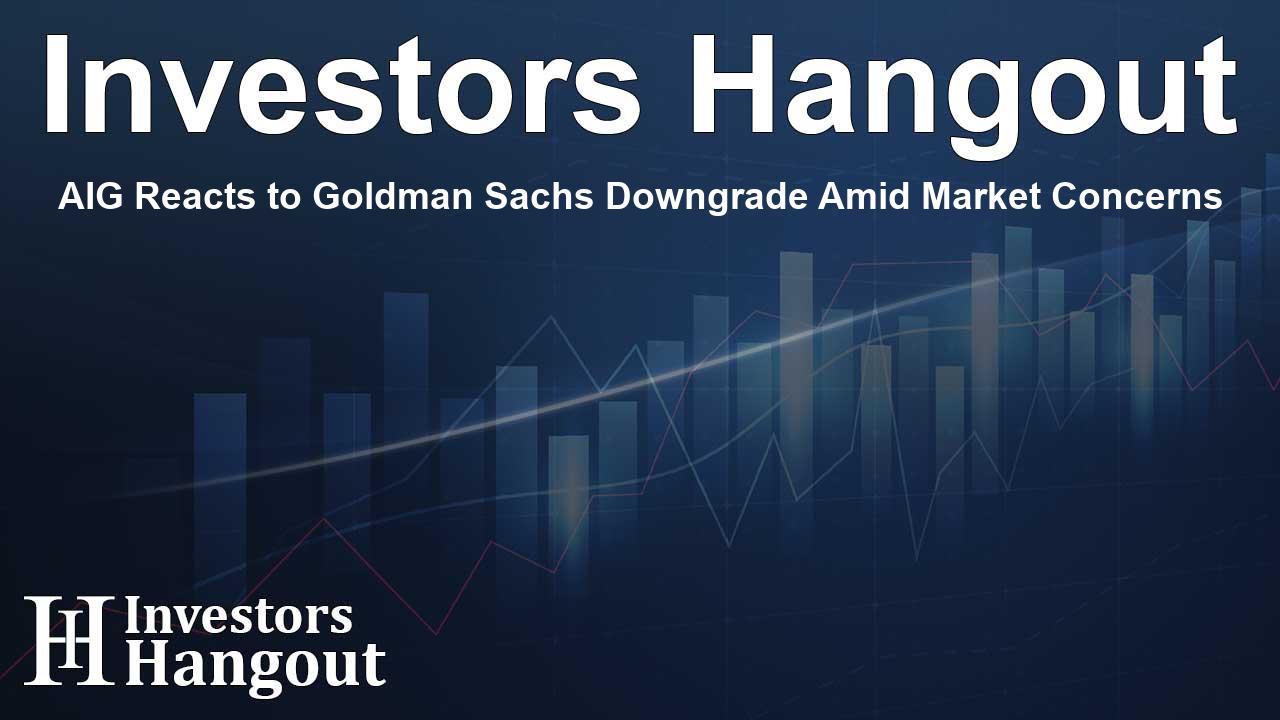AIG Reacts to Goldman Sachs Downgrade Amid Market Concerns

AIG Stock Takes a Hit After Goldman Sachs Downgrade
Shares of American International Group (NYSE: AIG) have recently experienced a decline of 4%. This drop follows a downgrade from Goldman Sachs, where the investment firm changed its rating from Buy to Neutral. They also adjusted AIG's price target down from $83.00 to $79.00.
Concerns About Commercial Lines Loss Ratio
The analyst from Goldman Sachs, Alex Scott, voiced concerns regarding AIG’s Commercial Lines loss ratio, predicting it will worsen more than previously expected. Scott highlighted AIG's substantial exposure to pricing pressures in various segments, especially in specialty property lines, Financial Lines, and large accounts, which are the main contributors to the downgrade.
Analyst's Insight on AIG's Challenges
In a statement, Scott mentioned, "AIG’s Commercial Lines loss ratio will deteriorate more than expected in coming years." This reflects the challenges AIG is experiencing in certain business segments, foreseeing an impact on the company’s financial performance.
Positive Transition Amidst Stock Decline
Despite the downgrade, Scott did acknowledge some positive developments within AIG. The company is in the process of transitioning to a standalone property and casualty (P&C) insurer, particularly after it divested its CRBG unit. This transition is poised to enhance AIG's capital flexibility and valuation, but unfortunately, these positive aspects did not mitigate the stock's decline following the downgrade.
Investor Reactions to Analyst Forecasts
As the analyst's projections came to light, investors reacted by adjusting their positions concerning AIG, anticipating an impact on profitability. The downgrade signals a change in market sentiment as AIG's stock price adapts to the new expectations set by market specialists.
AIG’s Future Direction
AIG's stock movement is indicative of the market's immediate reaction to the analyst’s report, emphasizing the significant influence that analyst ratings and predictions have on stock prices. As AIG proceeds with its restructuring efforts and addresses the concerns raised by Goldman Sachs, investors will undoubtedly monitor its progress in the upcoming quarters.
Frequently Asked Questions
What led to the downgrade of AIG's stock by Goldman Sachs?
The downgrade resulted from concerns about AIG's Commercial Lines loss ratio and pressures on various segments of its business.
How much did AIG's shares drop after the downgrade?
AIG's shares declined by 4% following the downgrade from Goldman Sachs.
What are the future expectations for AIG after the downgrade?
Future expectations include monitoring AIG's restructuring efforts and its ability to address financial performance concerns.
Is there anything positive about AIG despite the downgrade?
Yes, AIG is transitioning to a standalone property and casualty insurer, which could improve its valuation and capital flexibility.
How do analyst ratings affect stock prices?
Analyst ratings and forecasts can significantly influence investor sentiment and stock prices, often leading to immediate market reactions.
About Investors Hangout
Investors Hangout is a leading online stock forum for financial discussion and learning, offering a wide range of free tools and resources. It draws in traders of all levels, who exchange market knowledge, investigate trading tactics, and keep an eye on industry developments in real time. Featuring financial articles, stock message boards, quotes, charts, company profiles, and live news updates. Through cooperative learning and a wealth of informational resources, it helps users from novices creating their first portfolios to experts honing their techniques. Join Investors Hangout today: https://investorshangout.com/
Disclaimer: The content of this article is solely for general informational purposes only; it does not represent legal, financial, or investment advice. Investors Hangout does not offer financial advice; the author is not a licensed financial advisor. Consult a qualified advisor before making any financial or investment decisions based on this article. The author's interpretation of publicly available data shapes the opinions presented here; as a result, they should not be taken as advice to purchase, sell, or hold any securities mentioned or any other investments. The author does not guarantee the accuracy, completeness, or timeliness of any material, providing it "as is." Information and market conditions may change; past performance is not indicative of future outcomes. If any of the material offered here is inaccurate, please contact us for corrections.